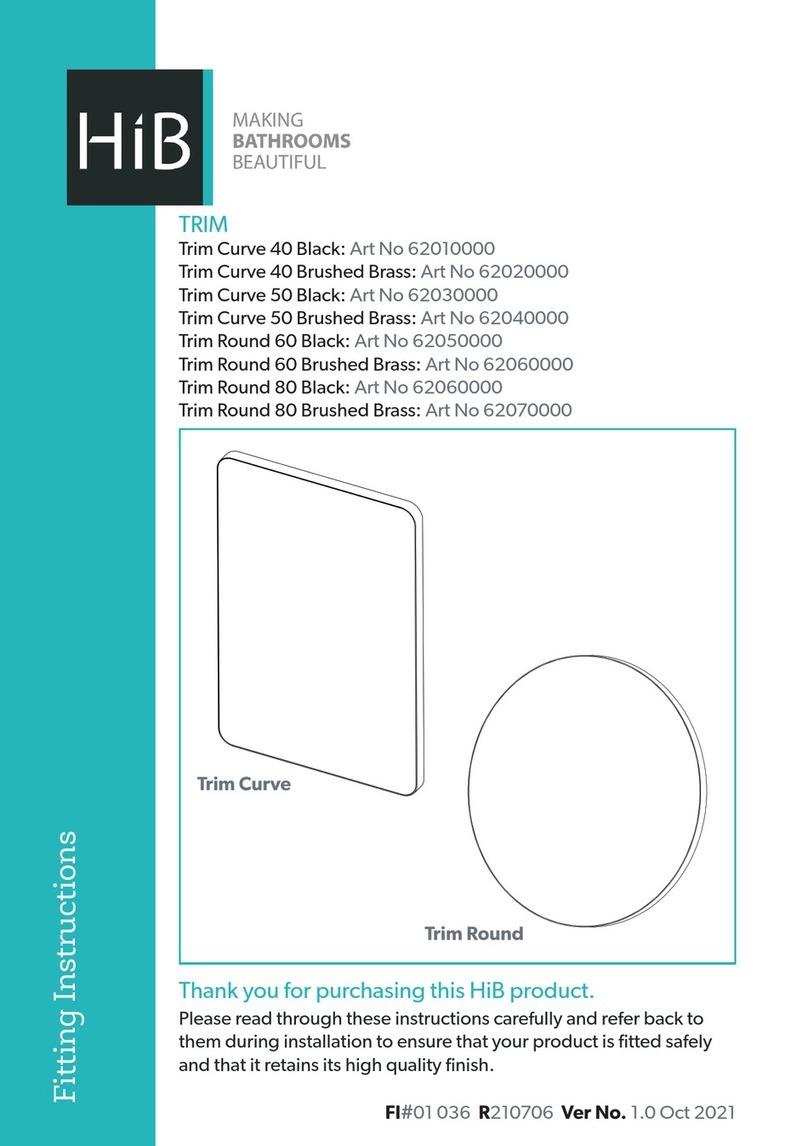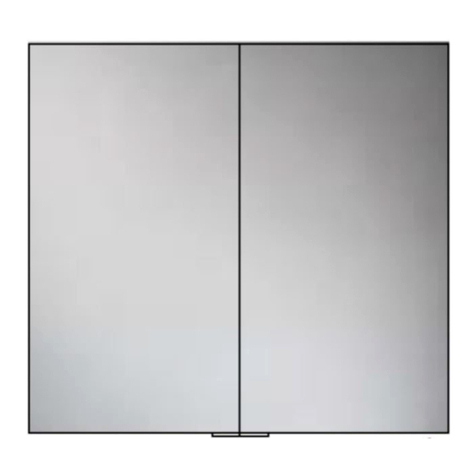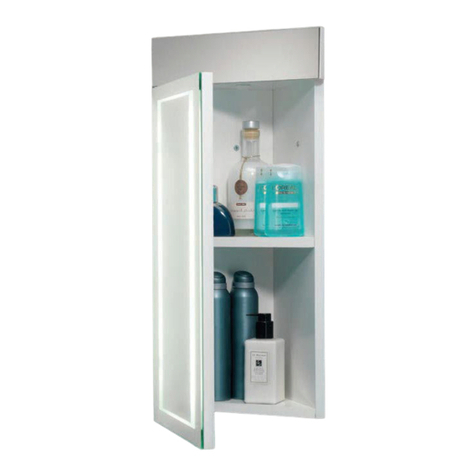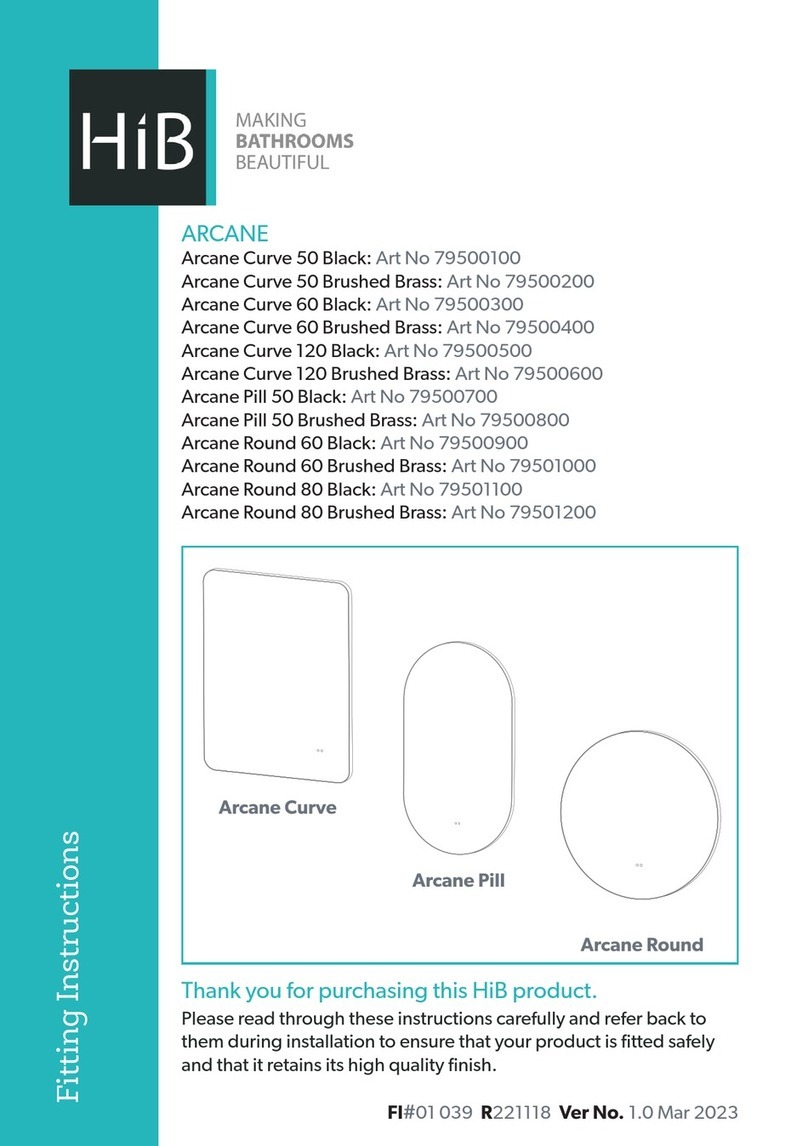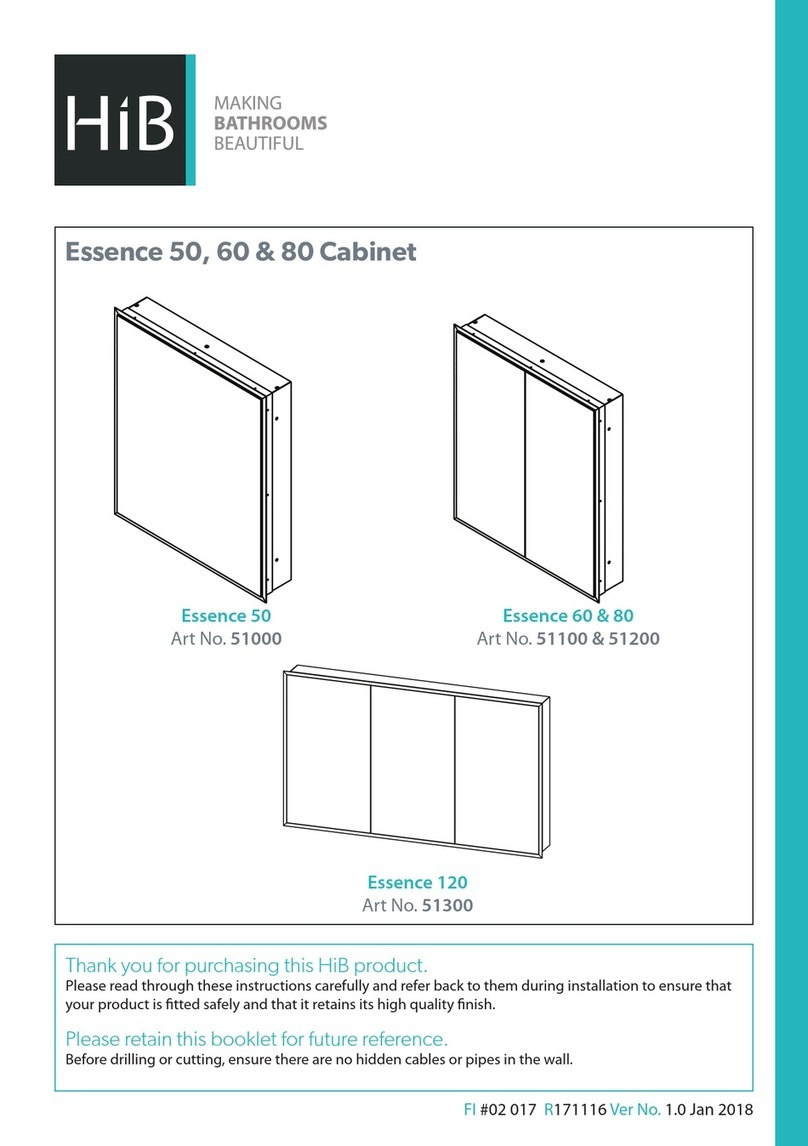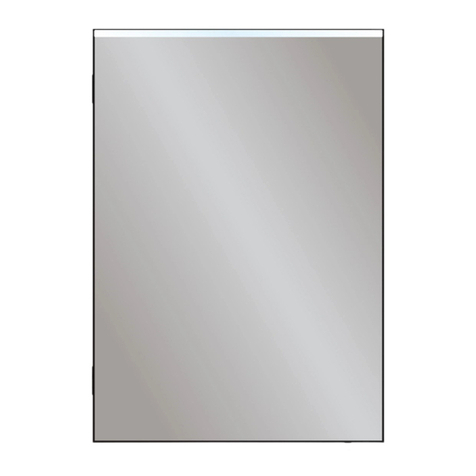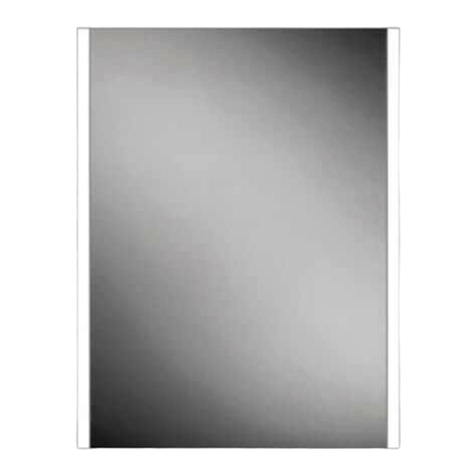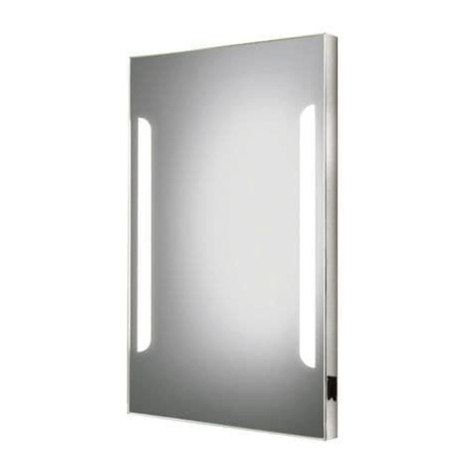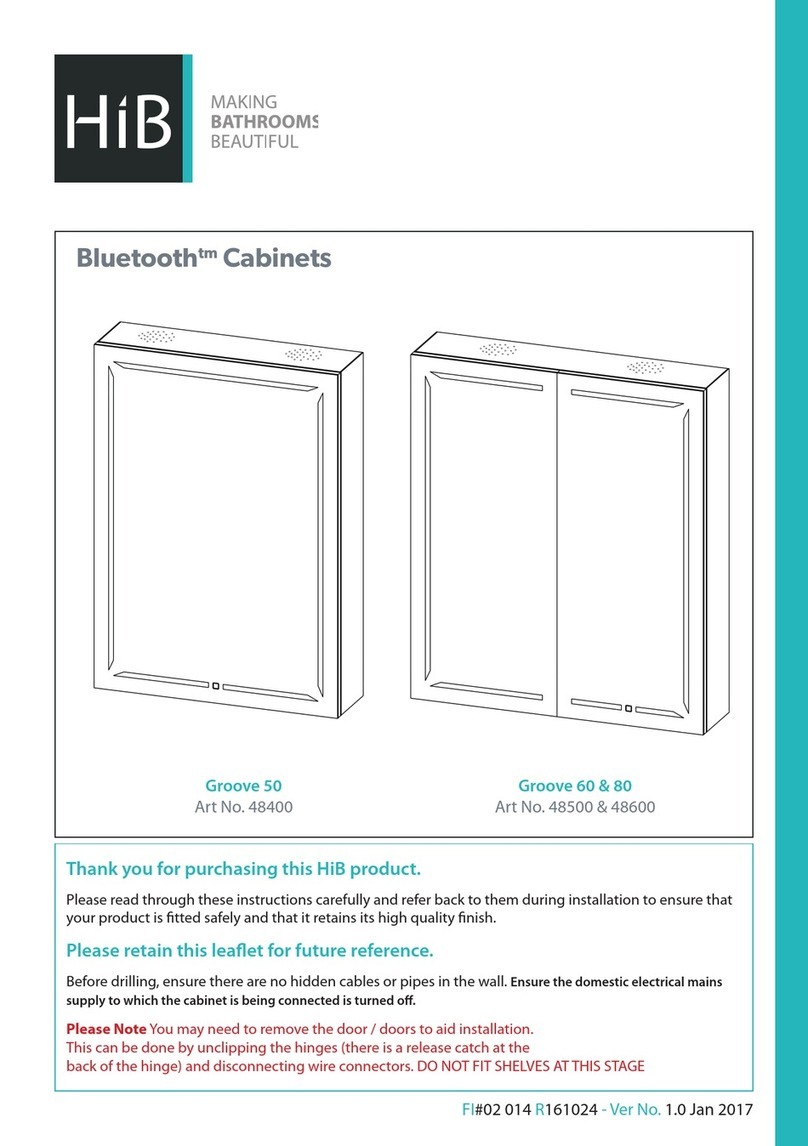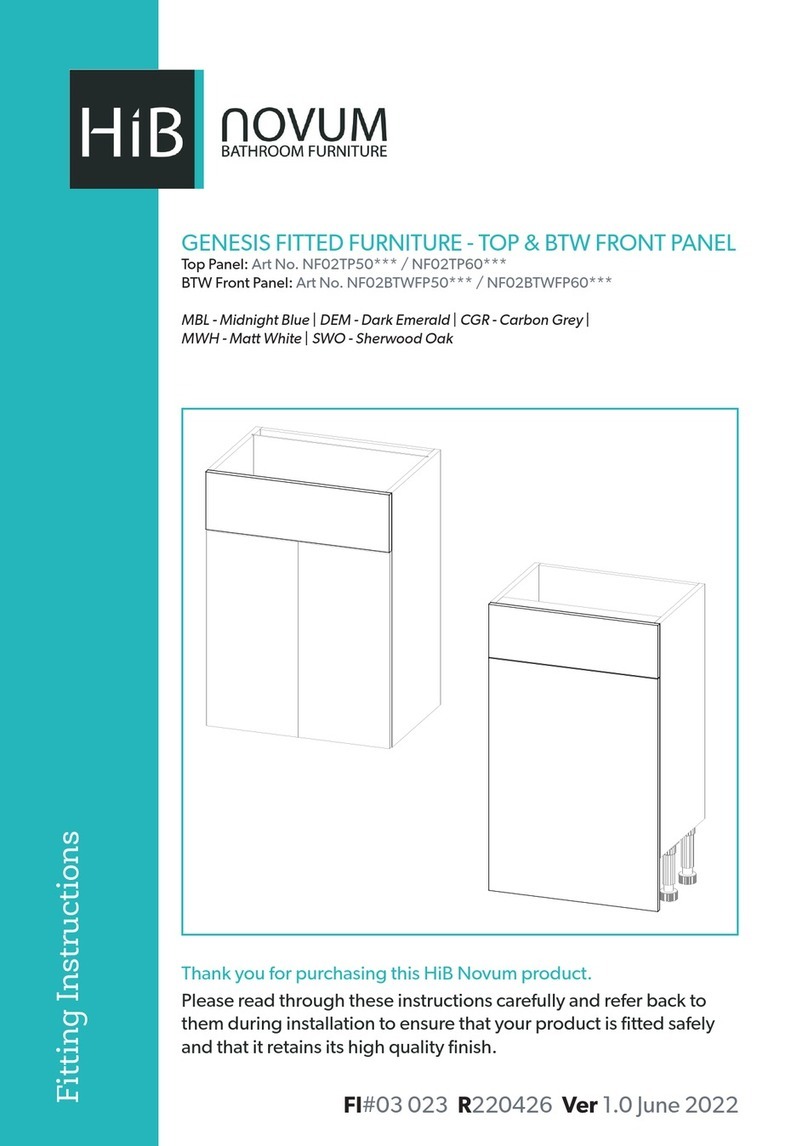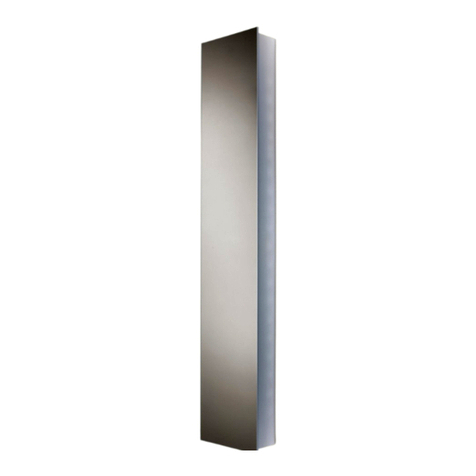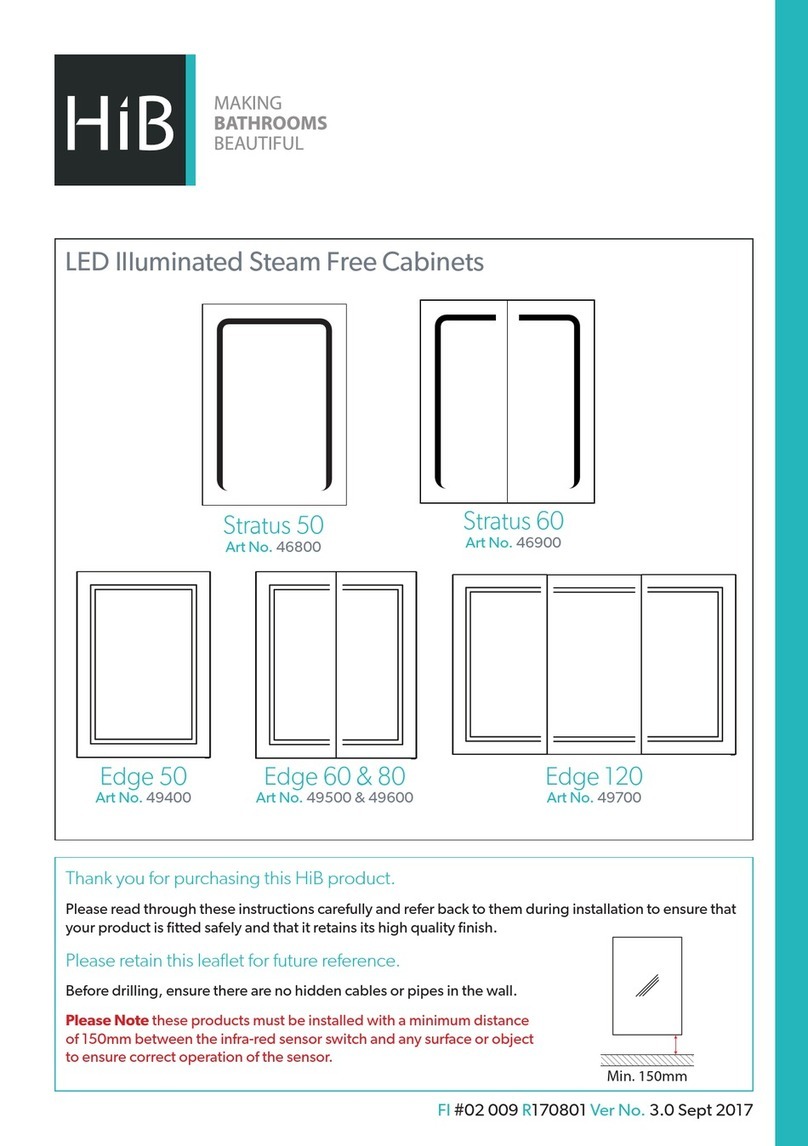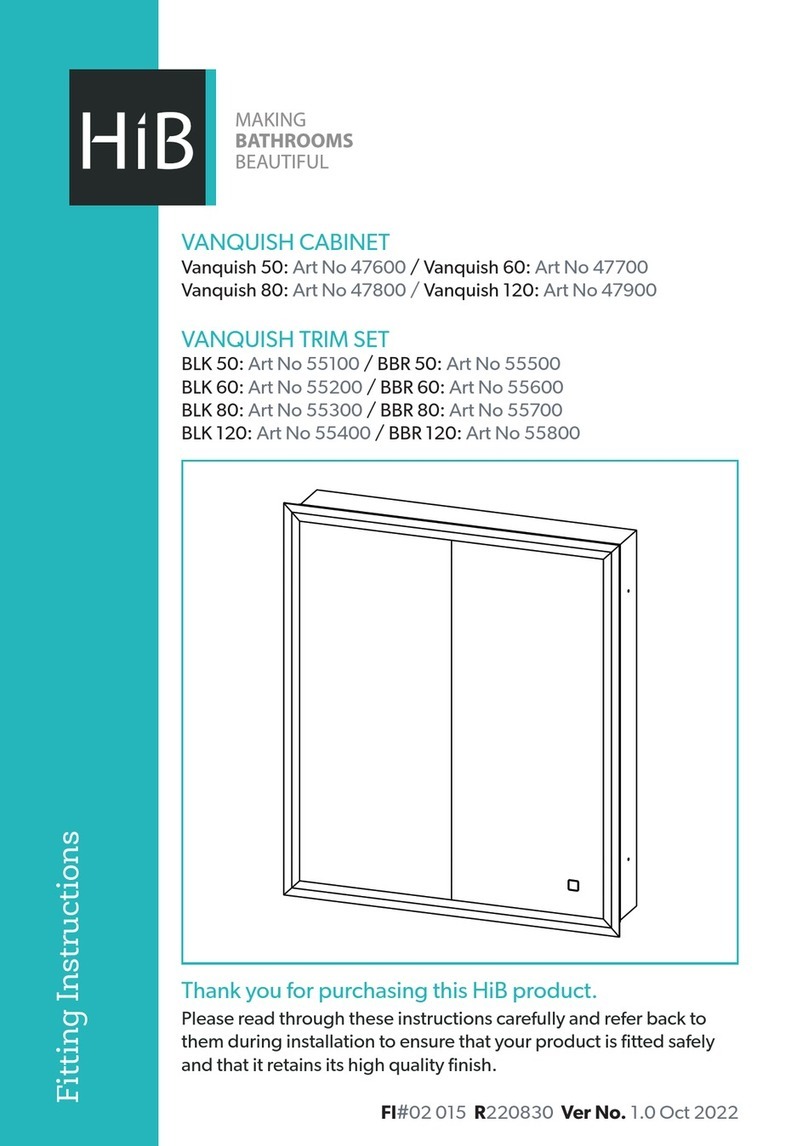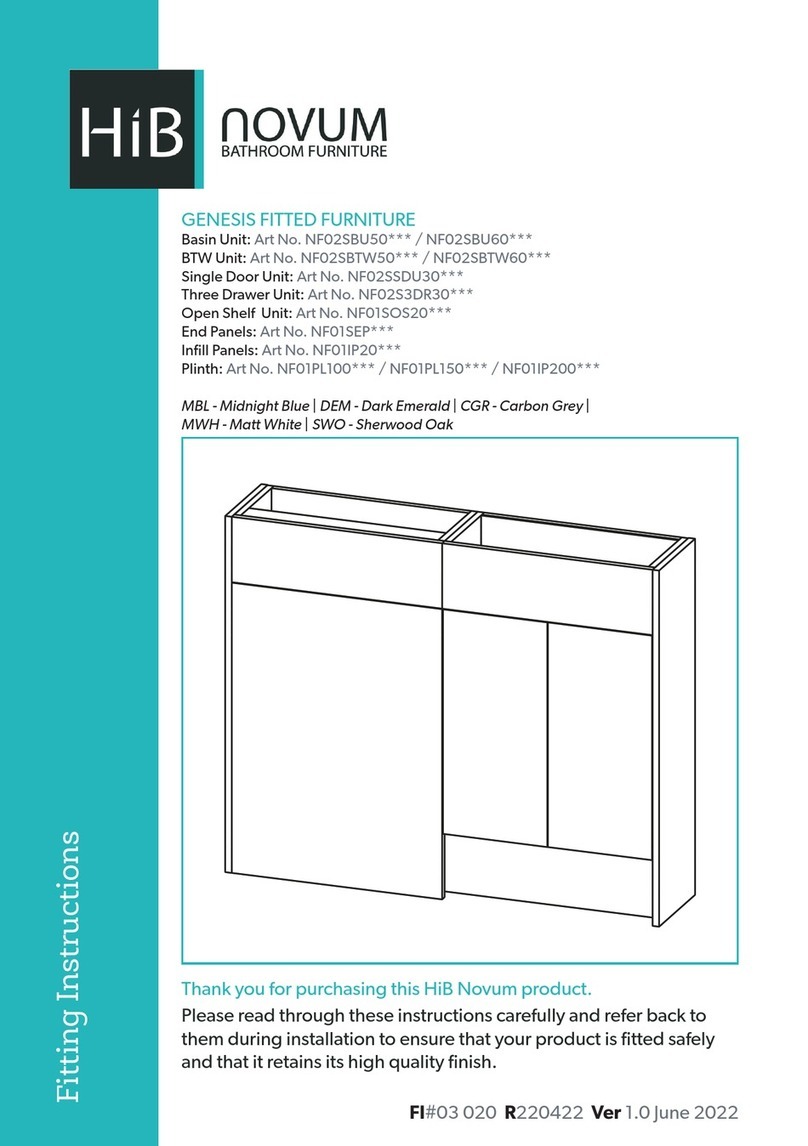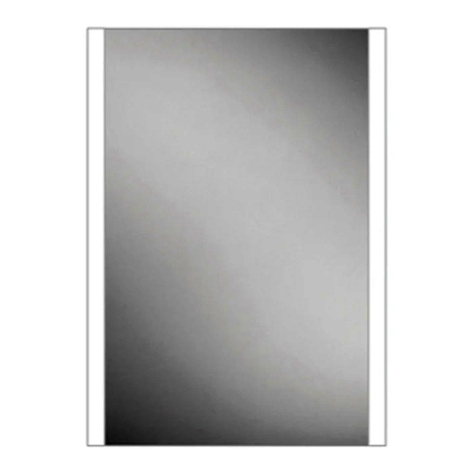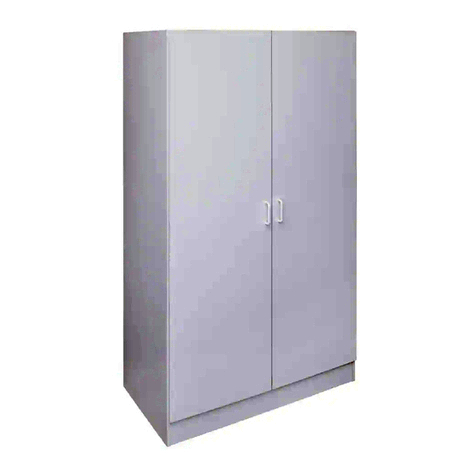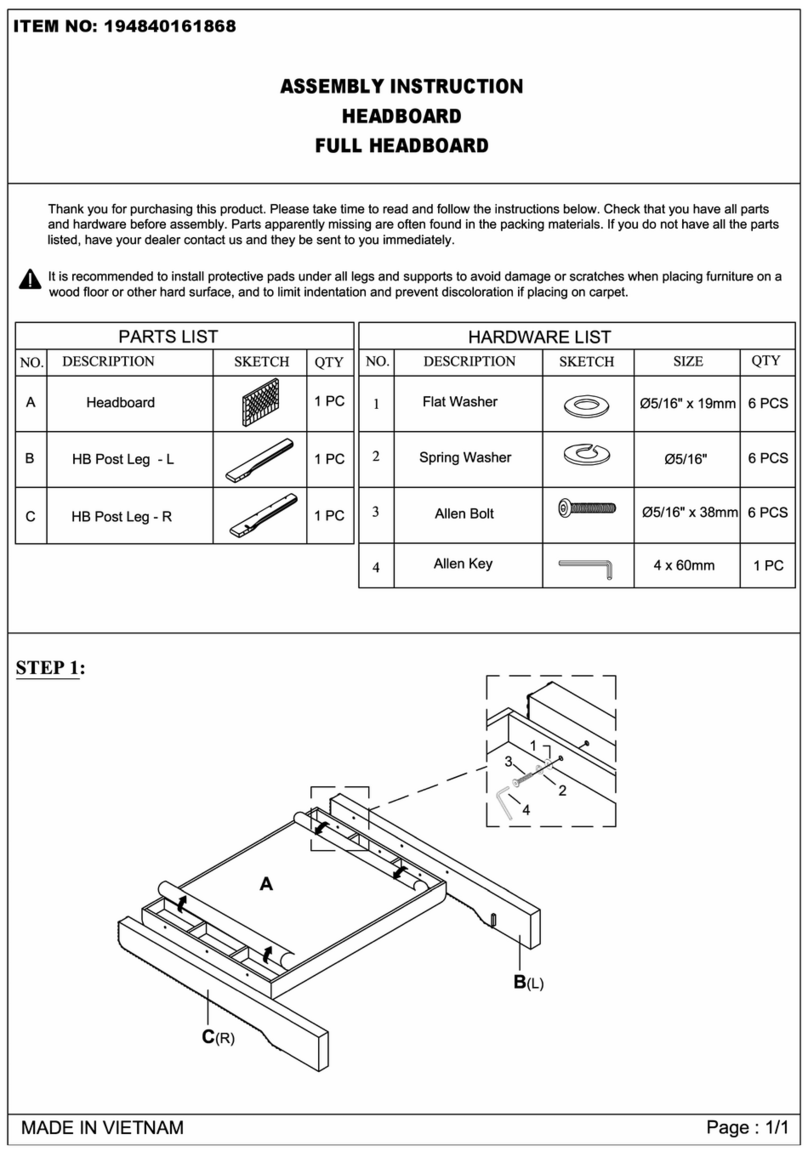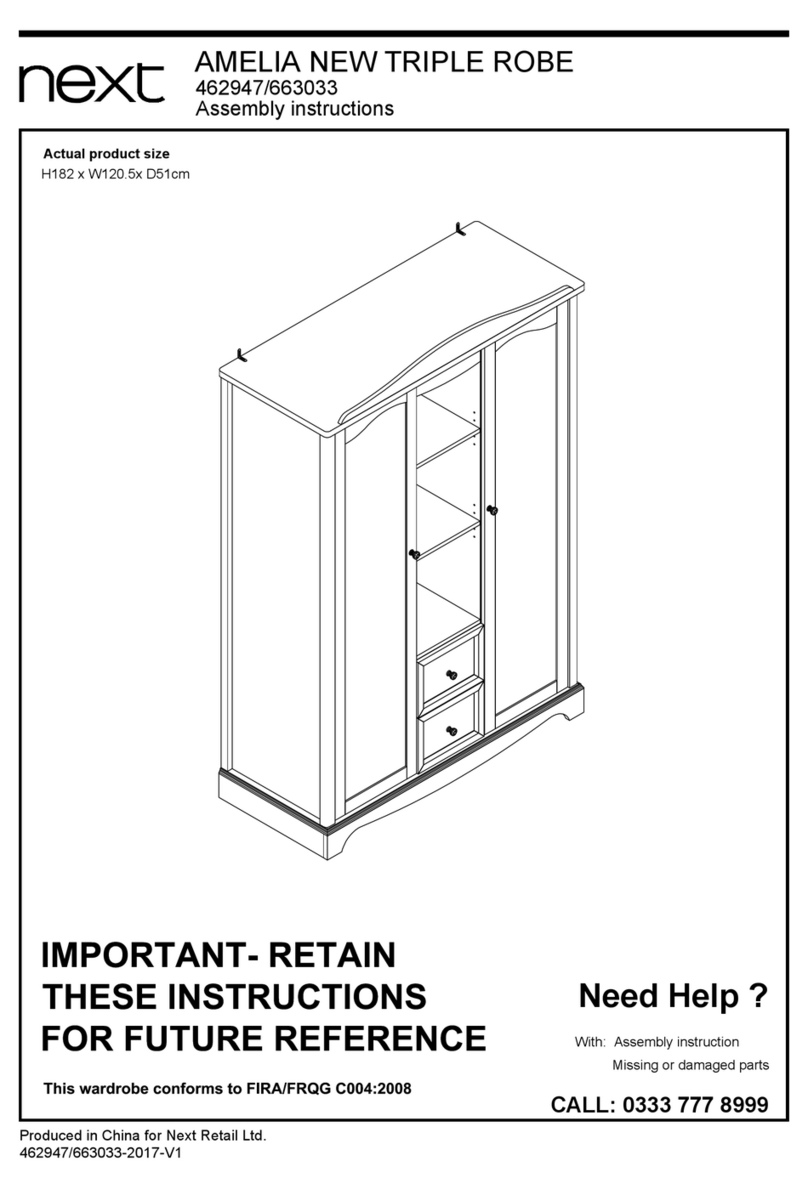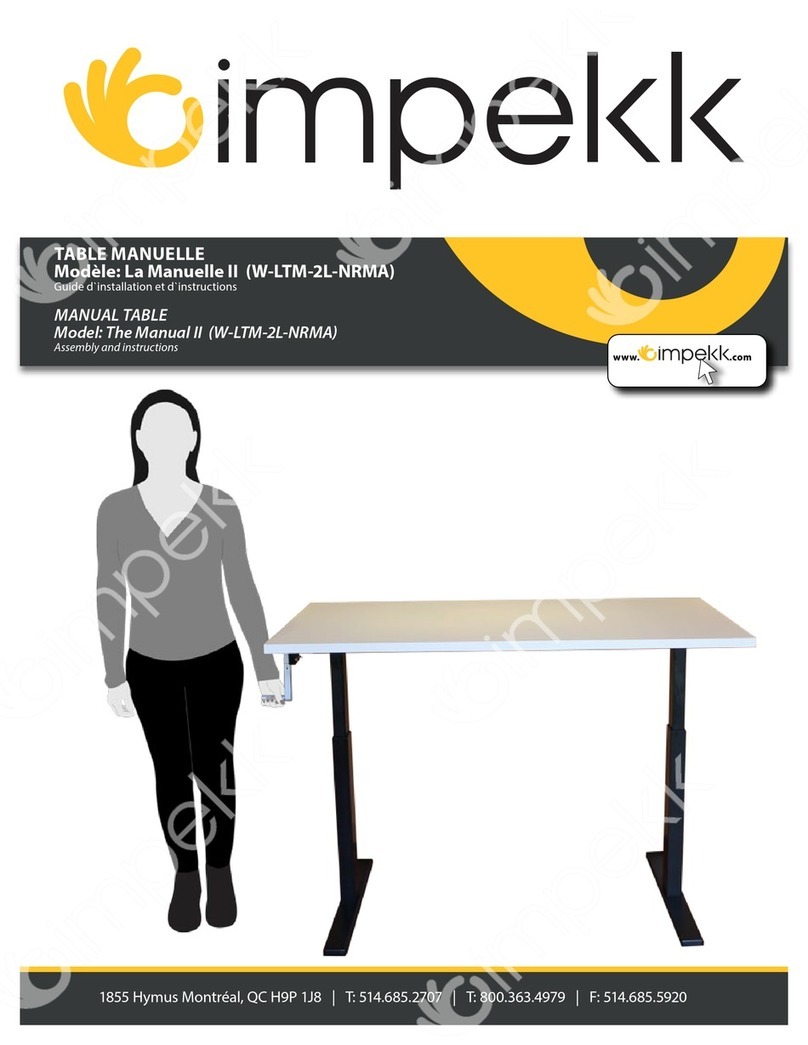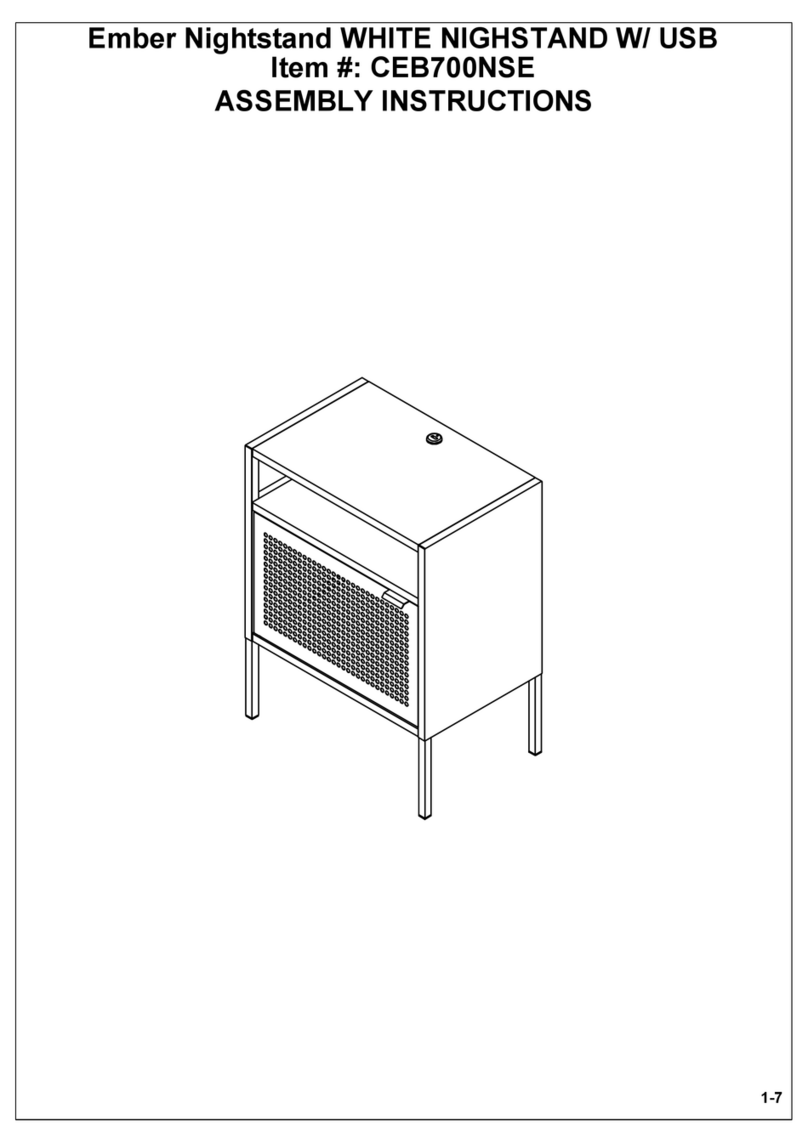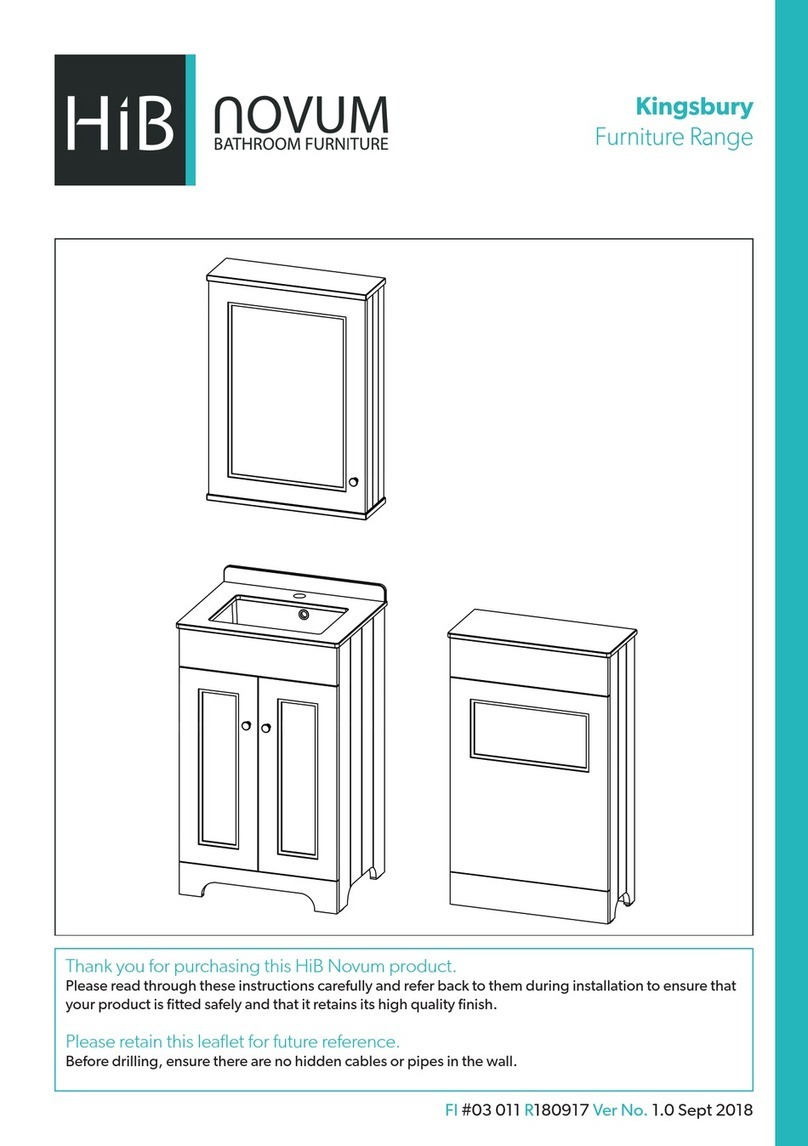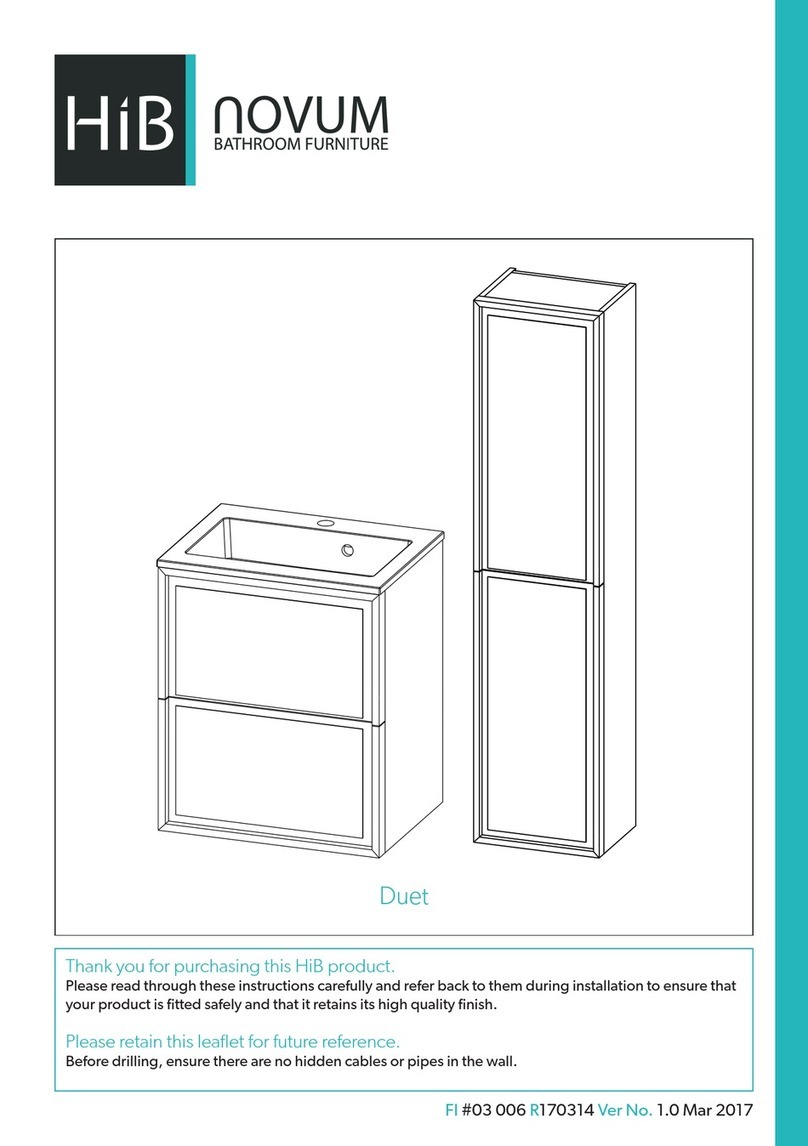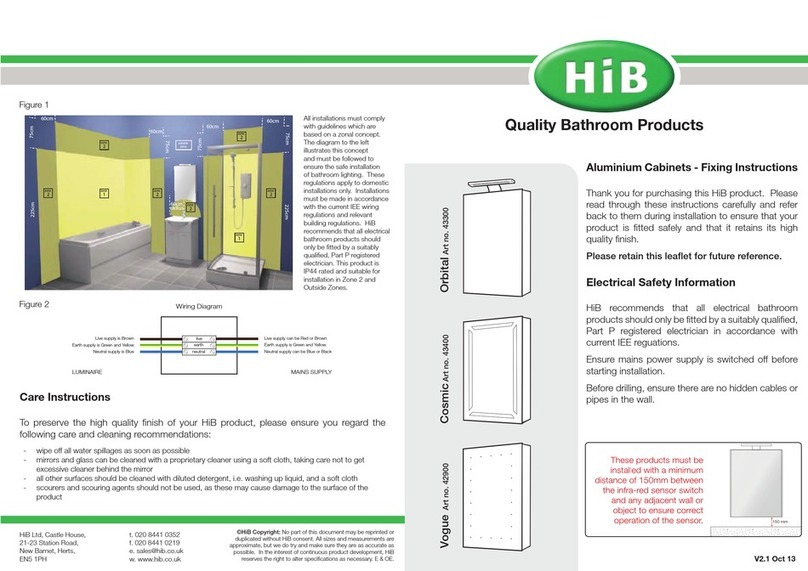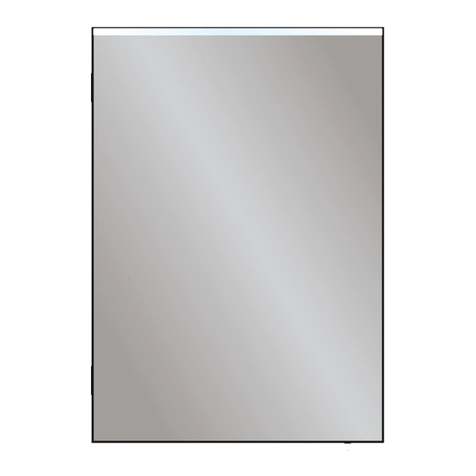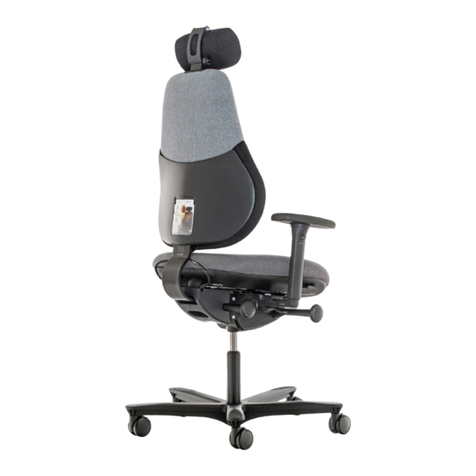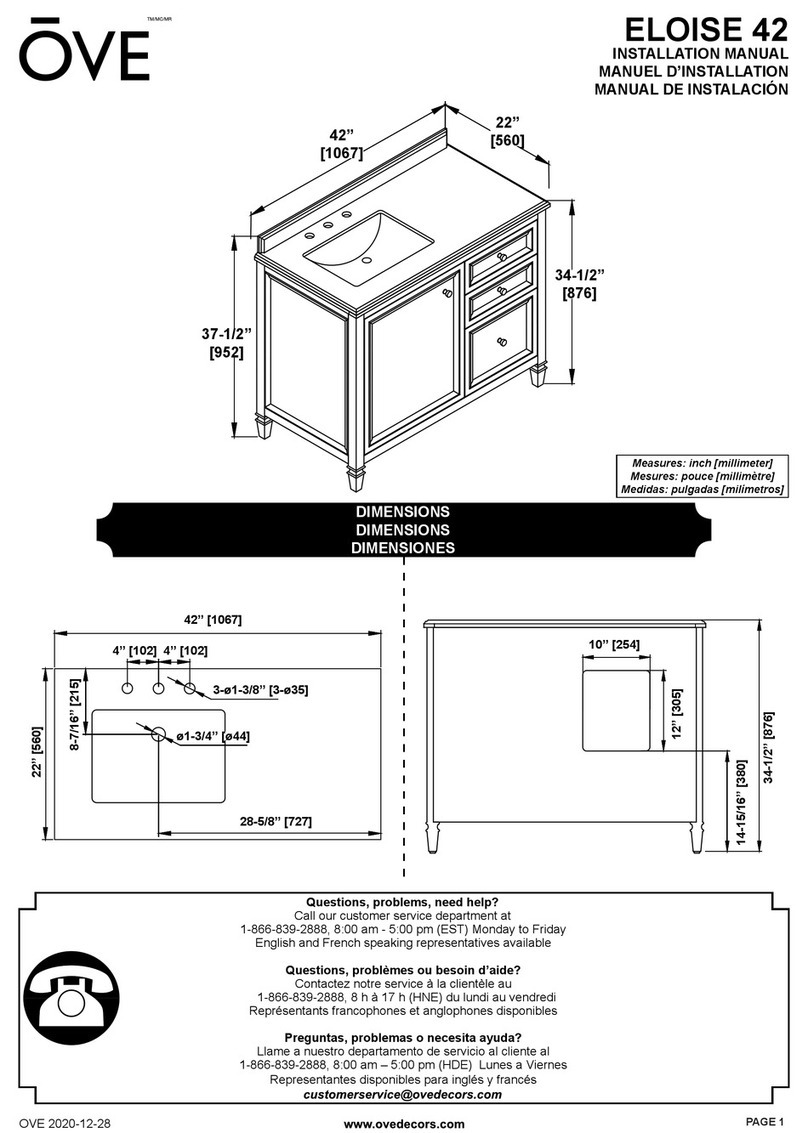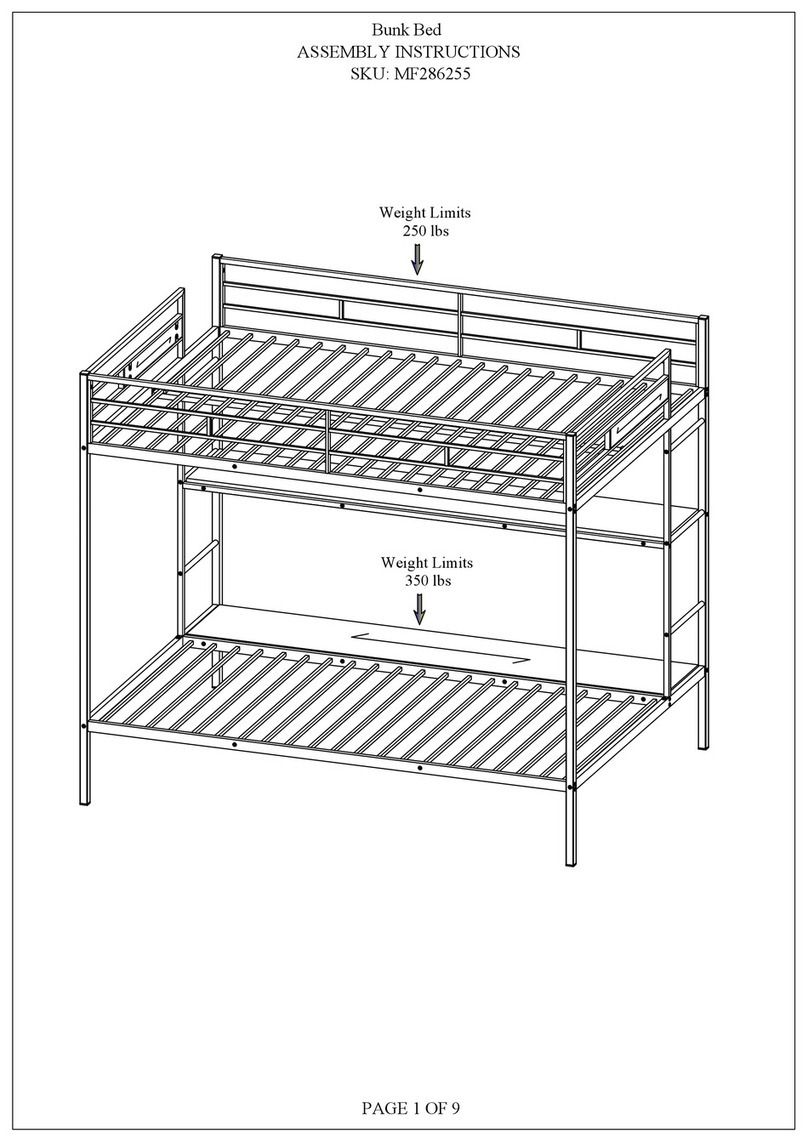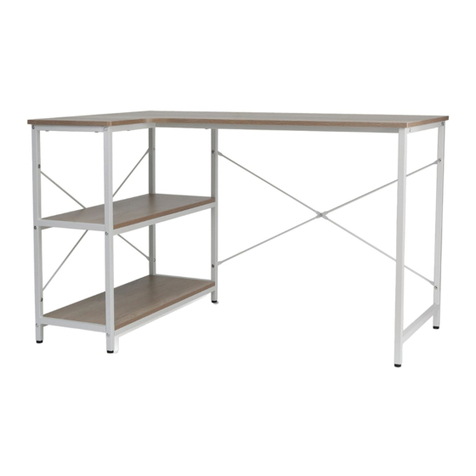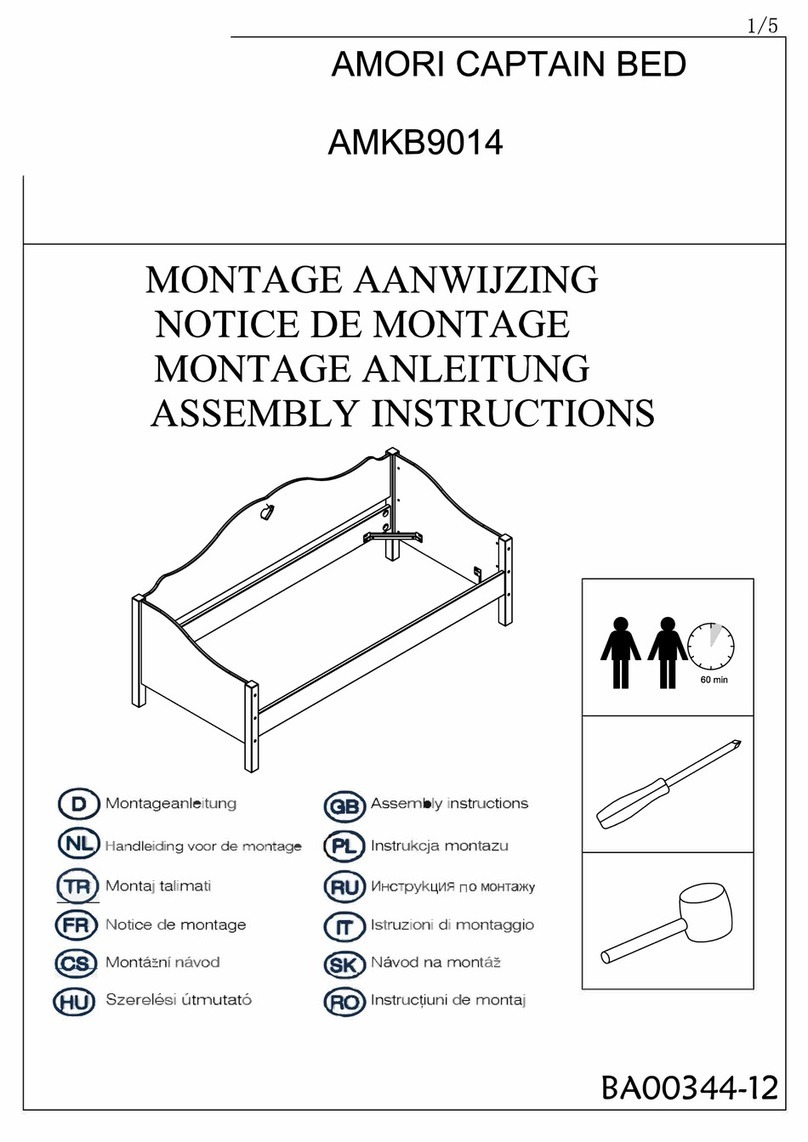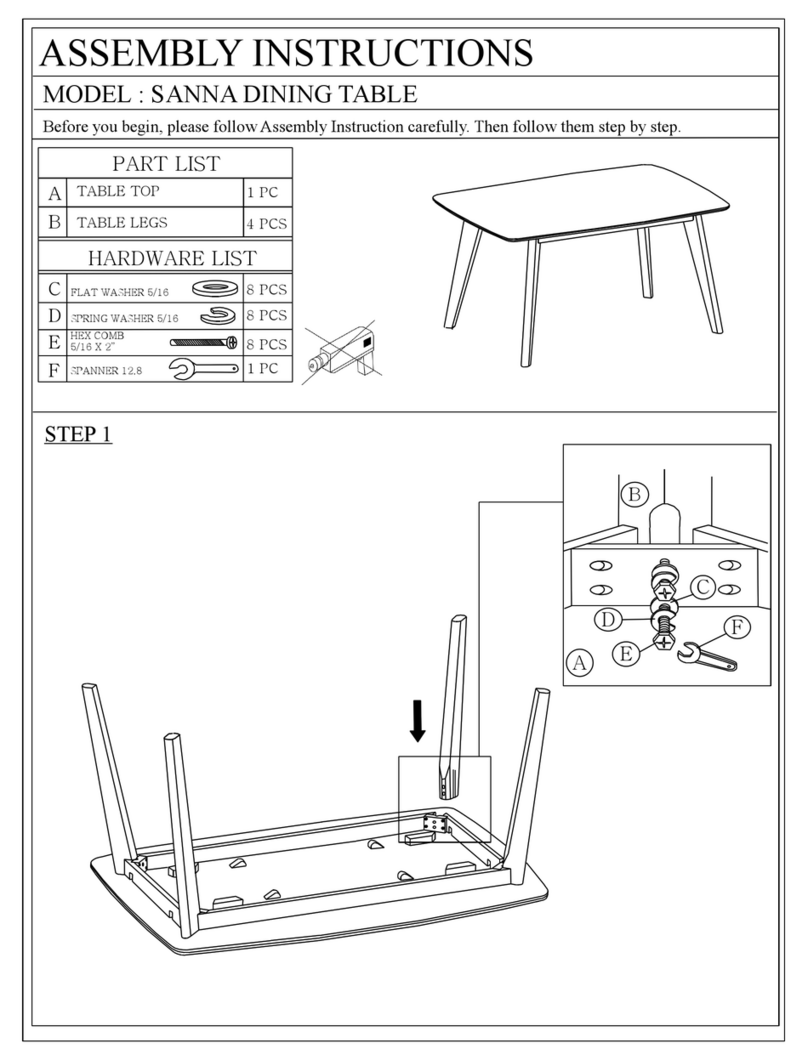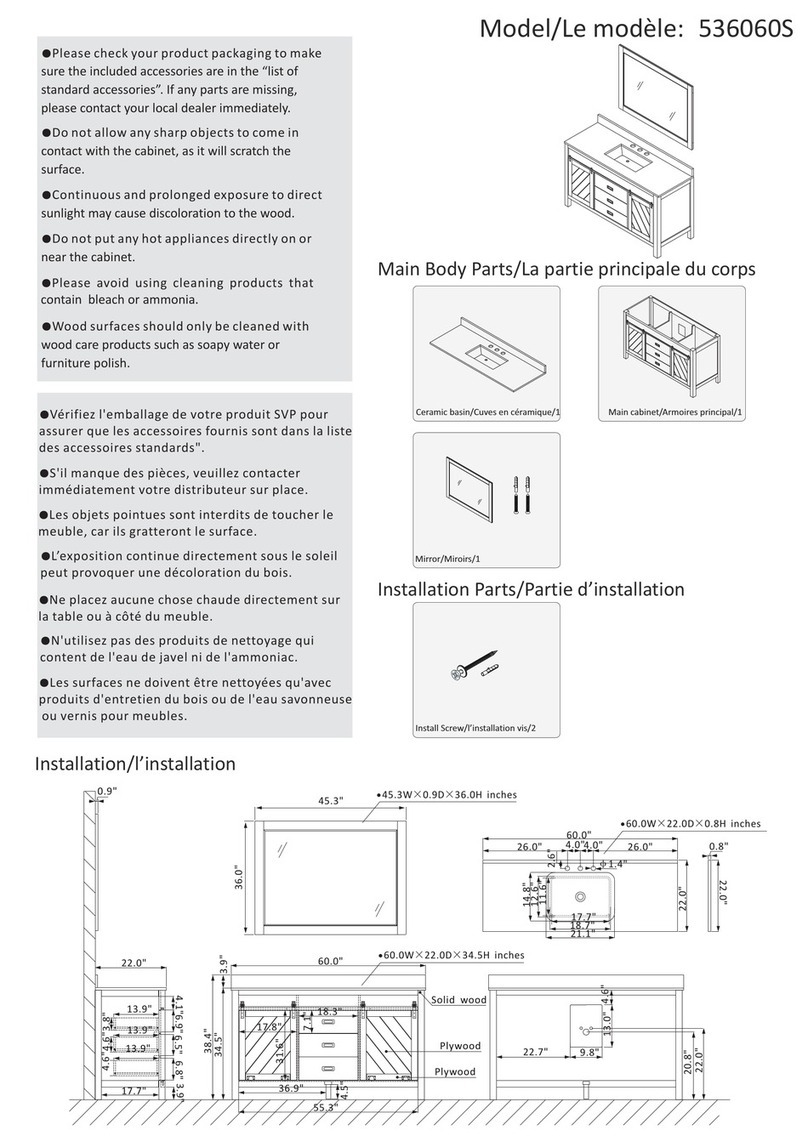
2
Hanger Adjustment (Fig C)
Fixing Preparation (Fig A)
Fixing Brackets (Fig B)
Wall Hung Installation
1. Position the cabinet in a suitable location, (according to the zonal diagram (Fig. 1) on the back page),
ensuring that the domestic electrical mains supply is within reach of the electrical connection point
of the cabinet. Carefully mark the position of the top of the cabinet using a soft pencil.
2. Remove the cabinet from the wall and using a spirit level, mark a horizontal line below the pencil
mark, taking into account the location of the mounting points. Place brackets on the new line paying
attention to the distance of the mounting points. Mark the position of the holes using a soft pencil.
(See g. A).
3. Before drilling, ensure there are no hidden cables or pipes behind the mounting points. Drill the
required holes in the marked positions. If drilling through tile, use a ceramic drill bit. Insert the wall
plugs level with the surface of the wall. If tting to a tiled surface, wall plugs should be inserted
below the tile surface to avoid cracking. NB. For plasterboard walls, specialist xings should be
purchased, available from any DIY or hardware store.
4. Fix the bracket to the wall using the screws provided. (See Fig. B).
5. Open the cabinet door(s) and remove screws on front edge of the internal panel at the top. Place
screws in a safe place.
6. Temporarily hang the cabinet ensuring claws on the hangers are securely located on the wall
brackets. Using a spirit level adjust the angle of the cabinet via the screws on hangers (See Fig. C).
using a drill create a suitable hole for an internal xing hole inside the cabinet (see Fig. A) and mark
all. Then remove cabinet from wall.
7. Drill a suitable hole in the marked location and t a wall plug (taking into account step 3).
8. Connect the domestic mains supply according to the wiring diagram (g. 2) on the back page.
9. Rehang cabinet, tighten screw on hangers (See Fig. C) and secure the base of the cabinet with
supplied screw & screw cap.
10. Once fully secure, close the internal top cover and secure with screws removed earlier.
11. Starting with the top shelf, insert the shelf supports in desired position and t shelves (See Fig. F).
12. Door(s) can be adjusted if required via screws on hinges. (See Fig. G).
13. Switch mains supply back on.
Recessed Area
Mounting Points
REAR VIEW
Angle
Adjustment
Claw In/Out
Adjustment

